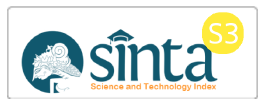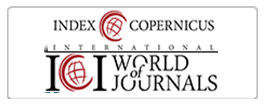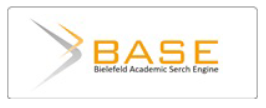Sustainability of Higher Education: The Role Of Financial Transparency, Continuing Education And Job Satisfaction
DOI:
https://doi.org/10.22219/jaa.v5i3.21590Keywords:
Continuing Education, Loyalty, TransparencyAbstract
Our article focuses on the problem of job satisfaction and loyalty of permanent lecturers in accounting at private universities. This article aims to provide empirical evidence regarding: the relationship between financial transparency, continuing education, and job satisfaction on the loyalty of accounting lecturers at private universities. We were collected data using a questionnaire that distributed directly to 279 accounting lecturers, from 12 universities in Indonesia as a sample. Structural Equation Modeling (SEM) analysis was employed to investigate the form of construct reliability. After the construct of each variable was declared reliable, we analyzed the data based on the level of relationship and influence of each variable. Our results showed that transparency in financial, continuing education, and job satisfaction can increase the loyalty of accounting lecturers. Our findings are expected to contribute to higher education leaders in taking long-term strategic policies through increasing financial management transparency, and continuing education. Through the level of lecturer satisfaction will trigger loyalty as a force in achieving the vision and mission of the university.
Downloads
References
Ahmed Mangi, R., Jawad Soomro Assistant Professor, H., Ali Ghumro Assistant Professor, I., Raza Abidi Assistant Professor, A., & Ali Jalbani Professor SZABIST Karachi, A. (2011). a Study of Job Satisfaction Among Non Phd Faculty in Universities. Australian Journal of Business and Management Research, 1(7), 83–90.
Alcaide González, M. Á., De La Poza Plaza, E., & Guadalajara Olmeda, N. (2020). The impact of corporate social responsibility transparency on the financial performance, brand value, and sustainability level of IT companies. Corporate Social Responsibility and Environmental Management, 27(2), 642–654. https://doi.org/10.1002/csr.1829
Benrhardt, V. L. (2016). Data, Data Everywhere Bringing All The Data Together For Continuous School Improvement (Second). Routledge. https://doi.org/10.1115/1.2015-jul-3
Bentley, P. J. (2012). The South African Academic Profession: Job Satisfaction for a Besieged Profession? In Job Satisfaction around the Academic World. https://doi.org/10.1007/978-94-007-5434-8
Blouin, M. C., Lee, R. L., & Erickson, G. S. (2018). The impact of online financial disclosure and donations in nonprofits. Journal of Nonprofit and Public Sector Marketing, 30(3), 251–266. https://doi.org/10.1080/10495142.2018.1452819
Borraz-Mora, J., Hernandez-Ortega, B., & Melguizo-Garde, M. (2020). The influence of generic-academic competences on satisfaction and loyalty: the view of two key actors in higher education. Journal of Higher Education Policy and Management, 42(5), 563–578. https://doi.org/10.1080/1360080X.2019.1689802
Busser, J. A., Shulga, L. V., Kang, H. J. (Annette), & Ramirez Molintas, D. H. (2019). The effect of hospitality conference messaging on employee job responses. International Journal of Hospitality Management, 78(May), 284–292. https://doi.org/10.1016/j.ijhm.2018.09.011
Casidy, R., & Wymer, W. (2015). The impact of brand strength on satisfaction, loyalty and WOM: An empirical examination in the higher education sector. Journal of Brand Management, 22(2), 117–135. https://doi.org/10.1057/bm.2015.6
Cervero, R. M., & Daley, B. J. (2016). Continuing Professional Education: A Contested Space (pp. 9–18). Wiley Periodicals, Inc. https://doi.org/: 10.1002/ace.20191
Colquitt, J. A., Lepine, J. A., & Wesson, M. J. (2014). Improving Performance and Commitment. McGraw-Hill Education.
Comey, J. (2018). A Higher Loyalty. 290.
Connelly, B. L., Certo, S. T., Ireland, R. D., & Reutzel, C. R. (2011). Signaling theory: A review and assessment. Journal of Management, 37(1), 39–67. https://doi.org/10.1177/0149206310388419
Dapko, J. L. (2012). Perceived Firm Transparency: Scale and Model Development. Dapko, Jennifer, January, 243-n/a. http://search.proquest.com/docview/1013834392?accountid=51189
Degreenia, A. R. (2018). Understanding Perceptions of Authentic Leadership, Job Satisfaction, and Organizational Commitment of Faculty at Land Grant Universities in the Colleges of Agriculture in the Southeast Region. North Carolina State University.
Farwell, M. M., Shier, M. L., & Handy, F. (2019). Explaining Trust in Canadian Charities: The Influence of Public Perceptions of Accountability, Transparency, Familiarity and Institutional Trust. Voluntas, 30(4), 768–782. https://doi.org/10.1007/s11266-018-00046-8
Fenwick, T. J. (2014). Assessment of Professionals’ Continuous Learning in Practice. 1271–1297. https://doi.org/10.1007/978-94-017-8902-8_46
Forssbaeck and Lars. (2015). The Oxford Handbook of Economic and Institusional Transparency. Oxford University Press.
Gerken, M., Beausaert, S., & Segers, M. (2016). Working on professional development of faculty staff in higher education: Investigating the relationship between social informal learning activities and employability. Human Resource Development International, 19(2), 135–151. https://doi.org/10.1080/13678868.2015.1116241
Goldin. (2016). Human Capital. Springer-Verlag.
Goodall, J, Day, C, Lindsay, G, Muijs, D. & H. (2005). Evaluating the impact of continuing professional development (CPD): Vol. Research R. London: Department for Education and Skill.
Graham, C., & Graham, C. (2013). Professional staff contributions to positive student outcomes. Australian Universities’ Review, 55, 7–16. http://ezproxy.deakin.edu.au/login?url=http://search.ebscohost.com/login.aspx?direct=true&db=eue&AN=85724693&site=eds-live&scope=site
Griffin, R. W., & Moorhead, G. (2014). Organizational Behavior: Managing People and Organizations (15 Edition). Cengage Learning.
Hafner, C. A. (2016). Transparency, Power, and Control. In Transparency, Power, and Control. https://doi.org/10.4324/9781315549781
Hagedorn, L. S. (2000). Conceptualizing Faculty Job Satisfaction: Components, Theories, and Outcomes. New Directions for Institutional Research, 2000(105), 5–20. https://doi.org/10.1002/ir.10501
Hair, Thomas, Christian, & Marko. (2014). A Primer on Partial Least Squares Structural Equation Modeling (PLS-SEM). SAGE Publication.
Hennekam, S. (2015). Career success of older workers: the influence of social skills and continuous learning ability. Journal of Management Development, 34(9), 1113–1133. https://doi.org/10.1108/JMD-05-2014-0047
Hladchenko, M. (2015). Transparency of the Management of Higher Education Institutions in the Netherlands. Euromentor Journal, 6(4), 30–40. http://search.proquest.com/docview/1761694191?accountid=14795%5Cnhttp://roble.unizar.es/search*spi/i?SEARCH=2068780X%5Cnhttp://linksource.ebsco.com/linking.aspx?sid=ProQ%3Aeducation&fmt=journal&genre=article&issn=2068780X&volume=6&issue=4&date=2015-12-01&
Hofmann, Y. E., & Strobel, M. (2020). Transparency goes a long way: information transparency and its effect on job satisfaction and turnover intentions of the professoriate. Journal of Business Economics, 90(5–6), 713–732. https://doi.org/10.1007/s11573-020-00984-0
Hökkä, P., & Eteläpelto, A. (2014). Seeking New Perspectives on the Development of Teacher Education: A Study of the Finnish Context. Journal of Teacher Education, 65(1), 39–52. https://doi.org/10.1177/0022487113504220
Huang, W. R., & Su, C. H. (2016). The mediating role of job satisfaction in the relationship between job training satisfaction and turnover intentions. Industrial and Commercial Training, 48(1), 42–52. https://doi.org/10.1108/ICT-04-2015-0029
Jongbloed Ben, Hans, Frans, D. (2018). Transparency in Higher Education:The Emergence of a New Perspectiveon Higher Education Governance. In R. P. Curaj, Ligia Deca (Ed.), European Higher Education Area: The Impact of Past and Future Policies. https://doi.org/10.1007/978-3-319-77407-7_36
Jordan, G., Miglič, G., Todorović, I., & Marič, M. (2017). Psychological empowerment, job satisfaction and organizational commitment among lecturers in higher education: Comparison of six CEE countries. Organizacija, 50(1), 17–32. https://doi.org/10.1515/orga-2017-0004
Kaushal, V., & Ali, N. (2020). University Reputation, Brand Attachment and Brand Personality as Antecedents of Student Loyalty: A Study in Higher Education Context. Corporate Reputation Review, 23(4), 254–266. https://doi.org/10.1057/s41299-019-00084-y
Kokocinski, L. J. (2015). Continuing Education Needs of Health Service Excecutives in Ontario. UMI.
Lam, L. W., & Liu, Y. (2014). The identity-based explanation of affective commitment. Journal of Managerial Psychology, 29(3), 321–340. https://doi.org/10.1108/JMP-02-2012-0036
Latif, K. F., Jan, S., & Shaheen, N. (2013). Association of Training Satisfaction with Employee Development aspect of Job Satisfaction. Journal Of Managerial Sciences, 7(1), 159–178.
Law, M. M. S., Hills, P., & Hau, B. C. H. (2017). Engaging Employees in Sustainable Development – a Case Study of Environmental Education and Awareness Training in Hong Kong. Business Strategy and the Environment, 26(1), 84–97. https://doi.org/10.1002/bse.1903
Lu, S., Huang, C. C., Deng, G., & Lu, K. (2020). Transparency and Resource Allocation of Grassroots Nonprofits in China. Voluntas, 31(6), 1188–1200. https://doi.org/10.1007/s11266-020-00230-9
Madera, J. M., T., S. S., & Beier, M. (2011). The Temporal Effect of Training Utility Perceptions on Adopting a Trained Method: The Role of Perceived Organizational Support Juan. Human Resource Development Quarterly, 22(1), 69–86. https://doi.org/10.1002/hrdq.20059
Memon, M. A., Salleh, R., & Baharom, M. N. R. (2016). The link between training satisfaction, work engagement and turnover intention. European Journal of Training and Development, 40(6), 407–429. https://doi.org/10.1108/EJTD-10-2015-0077
Pedro, E., Alves, H., & Leitão, J. (2018). Does the quality of academic life mediate the satisfaction, loyalty and recommendation of HEI students? Internacional Journal of Education Management, 1–5. https://doi.org/10.1108/IJEM-04-2017-0086
Reissen, B. (2012). Financial Indicators In Strategic Decision Making : Recommended Practices For Financial Officers At Small Private Colleges And Universities In The Midwestern United States (Issue September). University of Nebraska.
Robbins, S. P., & Judge, T. A. (2017). Essentials of Organizational Behavior (13th Editi). Pearson Education Limited.
Shah G. Syed, A. A., Bhatti, N., Michael, S., Shaikh, F. M., & Shah, H. (2012). Job Satisfaction of Faculty Members of Universities in Pakistan: A Case Study of University of Sindh-Jamshoro. Modern Applied Science, 6(7), 89–95. https://doi.org/10.5539/mas.v6n7p89
Sofyani, H., & Tahar, A. (2021). Peran Akuntabilitas Dan Transparansi Pemerintah Desa Indonesia Terhadap Kepercayaan Masyarakat Desa: Kasus Di Kabupaten Bantul. Jurnal Akademi Akuntansi, 4(1), 10–25. https://doi.org/10.22219/jaa.v4i1.16481
Taj, S. A. (2016). Application of signaling theory in management research: Addressing major gaps in theory. European Management Journal, 34(4), 338–348. https://doi.org/10.1016/j.emj.2016.02.001
Takawira, N., Coetzee, M., Schreuder, D., Management, R., & Africa, S. (2014). Job embeddedness , work engagement and turnover intention of staff in a higher education institution : An exploratory study. Journal of Human Resource Management, 12(1), 1–10. https://doi.org/10.4102/ sajhrm.v12i1.524
Tampubolon, M. . & M. L. (2011). Loyalitas Dosen Tersertifikasi dengan variabel independen Kepuasan kerja dan variabel intervening Pemahaman Misi UKI.
Tayfur Ekmekci, O., Bayhan Karapinar, P., Metin Camgoz, S., Ozsoy Ozmen, A., & Kumbul Guler, B. (2018). Academics’ Responses to Job Insecurity: The Mediating Effect of Job Satisfaction. Higher Education Policy. https://doi.org/10.1057/s41307-018-00129-7
Teichler, U. (2016). Biographies and careers throughout academic life (Vol. 16). Springer. https://doi.org/10.1007/978-3-319-27493-5
Tnay, E., Othman, A. E. A., Siong, H. C., & Lim, S. L. O. (2013). The Influences of Job Satisfaction and Organizational Commitment on Turnover Intention. Procedia - Social and Behavioral Sciences, 97, 201–208. https://doi.org/10.1016/j.sbspro.2013.10.223
Trudgett, M., Page, S., & Harrison, N. (2016). Brilliant Minds: A Snapshot of Successful Indigenous Australian Doctoral Students. Australian Journal of Indigenous Education, 45(1), 70–79. https://doi.org/10.1017/jie.2016.8
Wijanto, S. H. (2007). Structural Equation Modeling dengan Lisrel 8.8 Konsep & Tutorial (1st ed.). Graha Ilmu.
Xu, M., Qin, X., Dust, S. B., & DiRenzo, M. S. (2019). Supervisor-subordinate proactive personality congruence and psychological safety: A signaling theory approach to employee voice behavior. Leadership Quarterly, 30(4), 440–453. https://doi.org/10.1016/j.leaqua.2019.03.001
Downloads
Published
Issue
Section
License
Copyright (c) 2022 Rudiyanto Rudiyanto, Nuzulul Hidayati, Zakiyya Tunnufus

This work is licensed under a Creative Commons Attribution-NonCommercial-ShareAlike 4.0 International License.
Jurnal Akademi Akuntansi is licensed under a Creative Commons Attribution-NonCommercial-ShareAlike 4.0 International License.
Authors who publish with this journal agree to the following terms:
- Authors retain copyright and grant the journal right of first publication with the work simultaneously licensed under a Creative Commons Attribution-NonCommercial-ShareAlike 4.0 International License that allows others to share the work with an acknowledgment of the work's authorship and initial publication in this journal.
- Authors are able to enter into separate, additional contractual arrangements for the non-exclusive distribution of the journal's published version of the work (e.g., post it to an institutional repository or publish it in a book), with an acknowledgment of its initial publication in this journal.
- Authors are permitted and encouraged to post their work online (e.g., in institutional repositories or on their website) prior to and during the submission process, as it can lead to productive exchanges, as well as earlier and greater citation of published work (See The Effect of Open Access).
Jurnal Akademi Akuntansi dilisensikan di bawah lisensi Creative Commons Attribution-NonCommercial-ShareAlike 4.0 International.
Penulis yang menerbitkan artikel di jurnal ini menyetujui ketentuan berikut:
- Penulis mempertahankan hak cipta dan memberikan hak jurnal atas publikasi pertama dengan karya yang secara serentak dilisensikan di bawah Lisensi Pengaitan Creative Commons yang memungkinkan orang lain untuk berbagi karya dengan pengakuan atas karya penulis dan publikasi awal dalam jurnal ini.
- Penulis dapat masuk ke dalam pengaturan kontrak tambahan yang terpisah untuk distribusi non-eksklusif versi karya jurnal yang diterbitkan (misalnya, mempostingnya ke repositori institusional atau mempublikasikannya dalam sebuah buku), dengan pengakuan publikasi awalnya di jurnal ini.
- Penulis diizinkan dan didorong untuk memposting pekerjaan mereka secara online (misalnya, di repositori institusional atau di situs web mereka) sebelum dan selama proses pengajuan, karena dapat mengarah pada pertukaran produktif, serta kutipan pekerjaan sebelumnya dan yang lebih besar (Lihat Pengaruh Akses Terbuka).
























